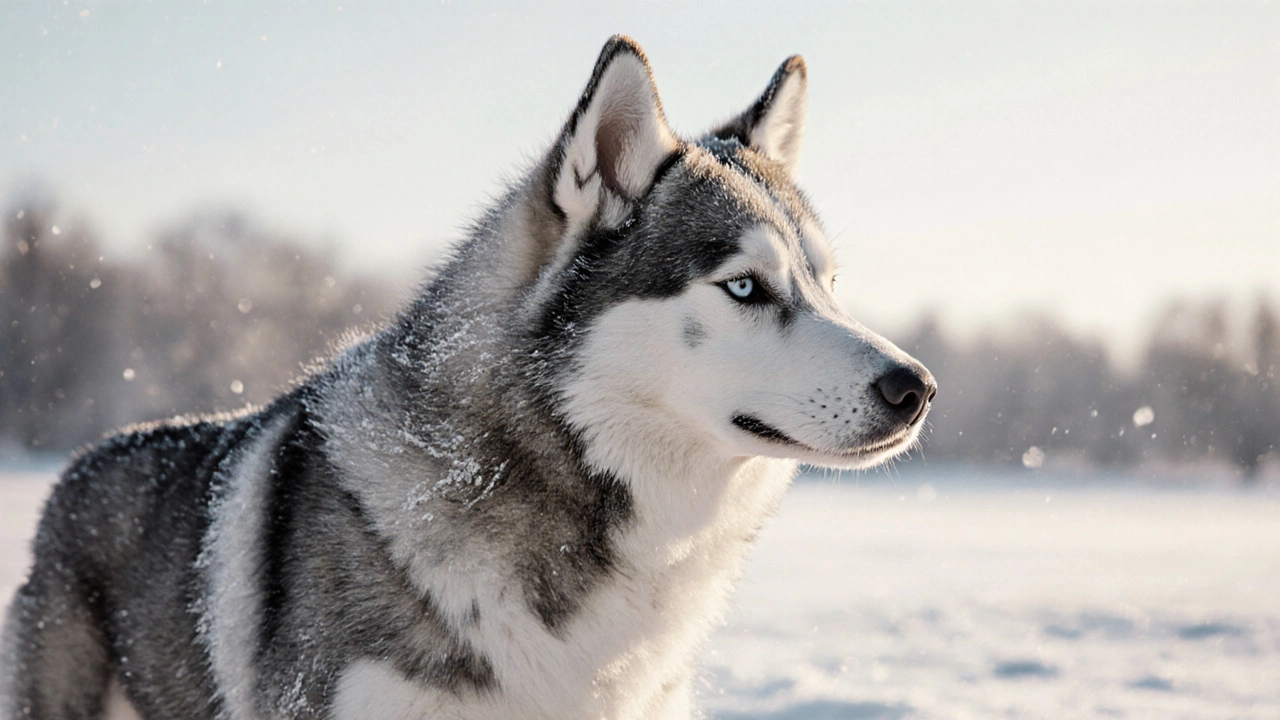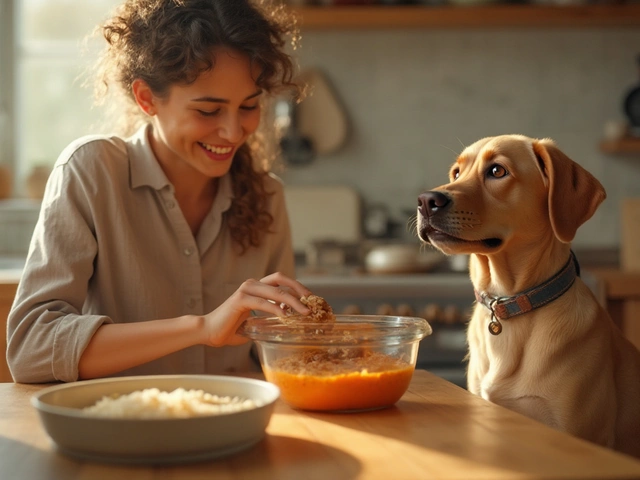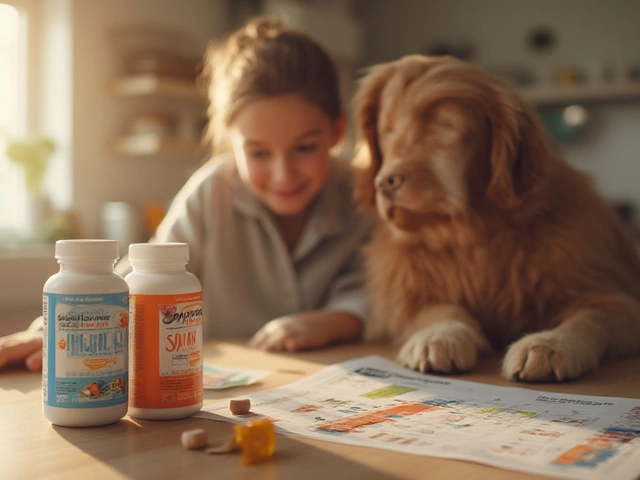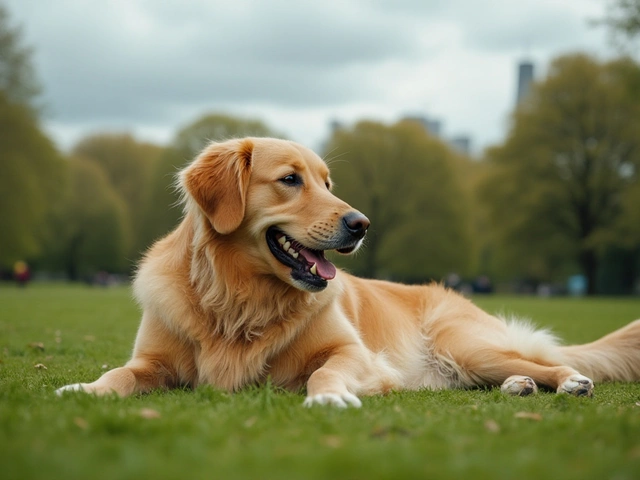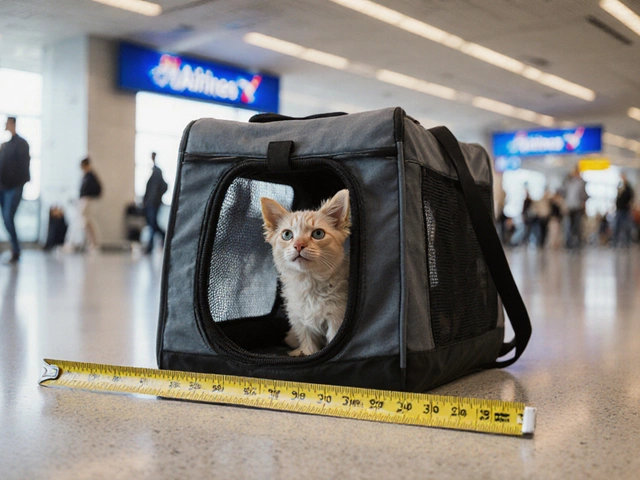Not every dog needs a trim. In fact, giving some dogs a haircut can do more harm than good. If you’ve ever seen a Poodle looking like a fluffy cloud or a Shih Tzu with a cute puppy cut, you might think all dogs benefit from a good groom. But that’s not true. Many breeds have coats designed by nature to protect them from weather, sun, and even bugs. Shaving or over-trimming these dogs can leave them vulnerable - and sometimes cause permanent coat damage.
Why Some Dogs Should Never Be Shaved
It’s not about looks. It’s about biology. Dogs with double coats - a thick undercoat and a longer topcoat - rely on both layers to stay cool in summer and warm in winter. The topcoat acts like a shield, reflecting sunlight and trapping air to regulate body temperature. When you shave it off, you’re removing their natural insulation. Instead of staying cooler, these dogs actually get hotter. Their skin burns more easily in the sun, and they lose the ability to wick away moisture.
A 2018 study from the University of Illinois found that double-coated breeds shaved in summer had higher body temperatures than those left unshaved. Their coats grew back patchy, uneven, or not at all in some cases. This isn’t just a myth. It’s science.
Double-Coated Breeds That Should Never Be Shaved
Here are the most common breeds with double coats that should never get a full shave:
- German Shepherds - Their coat sheds seasonally. Brushing removes loose fur; shaving disrupts the natural cycle.
- Golden Retrievers - Long, water-repellent outer hair protects their skin. Shaving increases risk of sunburn and heatstroke.
- Labrador Retrievers - Dense undercoat keeps them warm in cold water. Shaving removes their natural waterproofing.
- Siberian Huskies - Built for Arctic winters. Their coat reflects UV rays in summer. Shaving = higher risk of skin cancer.
- Alaskan Malamutes - Thick fur traps air like insulation. Shaving can lead to irreversible coat thinning.
- Chow Chows - Their lion-like mane is more than just flair. It protects their skin from insects and sun.
- Samoyeds - White, fluffy coats reflect sunlight. Shaving exposes sensitive skin to burns and parasites.
- Shiba Inus - They blow their undercoat twice a year. Brushing works better than cutting.
If you’re unsure whether your dog has a double coat, look closely at the base of their fur. If you see a soft, woolly layer underneath the longer hairs, that’s the undercoat. That’s the layer you must never remove.
What Happens When You Shave a Double-Coated Dog?
It’s not just about looking odd. The damage can be long-term. After shaving, many dogs develop a condition called clipper alopecia. Their coat stops growing back properly. The new hair that grows in is often coarse, patchy, or a different color. In some cases, it never returns to its original texture.
One owner in Bristol, Sarah M., shaved her 7-year-old Golden Retriever after hearing a groomer say it would help with shedding. Within six months, the fur on her dog’s back grew back thin and wiry. The vet confirmed it was permanent damage from shaving. Her dog now gets sunburned easily and needs sunscreen on sunny days - something he never needed before.
Shaving also removes the natural oils that keep skin healthy. Without the topcoat, dirt and allergens stick to the skin more easily. This can lead to hot spots, infections, and itching.

What to Do Instead of Shaving
You don’t need to shave to keep your dog cool. Here’s what actually works:
- Brush daily - Use an undercoat rake or slicker brush during shedding season. This removes dead fur without cutting live hair.
- Bathe with a deshedding shampoo - Look for formulas with oatmeal or aloe to soothe skin and loosen undercoat.
- Use a blow dryer on cool setting - After bathing, blow dry while brushing. This helps remove loose undercoat faster.
- Keep your dog indoors during peak heat - Between 11 a.m. and 4 p.m., keep them in shaded or air-conditioned areas.
- Provide cool surfaces - Dog cooling mats or tile floors help them regulate temperature naturally.
For long-haired breeds like Maltese or Lhasa Apso, a light trim around the paws, face, and sanitary areas is fine. But never cut the body coat short. A 1-inch length is the minimum safe cut for any double-coated breed.
What About Single-Coated Dogs?
Not all dogs have double coats. Breeds like Poodles, Bichon Frises, Shih Tzus, and Yorkshire Terriers have single coats that grow continuously, like human hair. These dogs benefit from regular trims to prevent matting and overheating. Their coats don’t provide insulation - they just grow. So keeping them neat is part of their care routine.
But even here, avoid going too short. A full buzz cut on a Poodle might look cute, but it leaves their skin exposed. A 1.5-inch clip is safer and still stylish.
Myths About Dog Haircuts
There are a lot of bad ideas floating around. Let’s clear up the biggest ones:
- Myth: "Shaving helps with shedding." - False. Shaving doesn’t stop shedding. It just makes the loose fur smaller and harder to clean up. Brushing does.
- Myth: "Dogs get hotter without hair." - False. Their coat keeps them cooler. Shaving makes them hotter.
- Myth: "A summer cut is fine if it’s not too short." - Not always. Even a 2-inch cut on a Husky can damage the follicles over time.
- Myth: "Groomers know best." - Not always. Many groomers push shaving because it’s faster. Ask if your dog has a double coat before agreeing to anything.
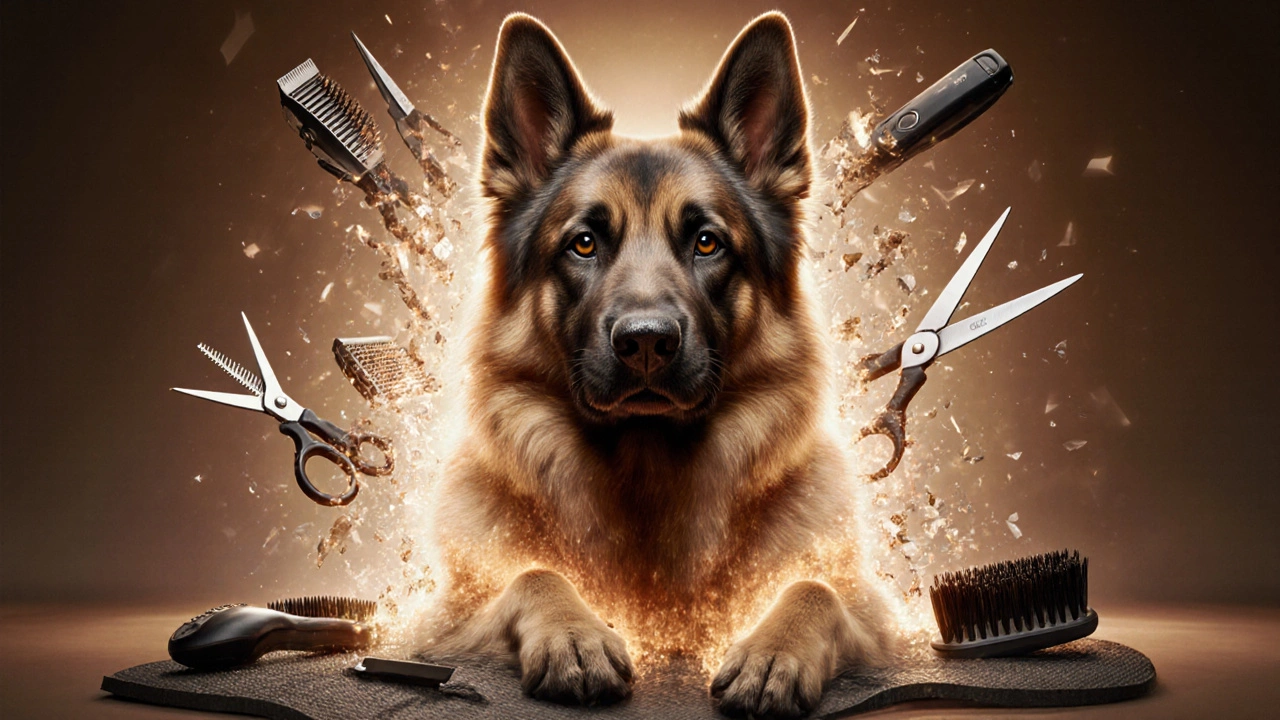
When Is a Haircut Actually Safe?
There are exceptions. A haircut may be necessary if:
- Your dog has severe matting that can’t be brushed out - even then, try to salvage the coat instead of shaving.
- Your dog has a skin condition that requires medicated trimming - always under vet guidance.
- Your dog is elderly or disabled and can’t groom themselves - light trimming for hygiene is okay.
Even in these cases, avoid shaving down to the skin. Leave at least half an inch of fur. Always consult your vet or a certified canine groomer before making major changes.
How to Tell If Your Dog Has a Double Coat
Look at the base of your dog’s fur. Part the hair down to the skin. If you see:
- A soft, dense layer underneath the longer guard hairs - that’s the undercoat. Double coat.
- A single layer of hair with no fluff underneath - single coat.
Still unsure? Google your breed + "double coat". Most reputable breed clubs list this info. If your dog is a mix, check the dominant breed traits.
Final Advice
Your dog’s coat is not a fashion statement. It’s part of their health. Don’t let trends or convenience override biology. If your dog is a Husky, a Shepherd, a Golden Retriever, or any other double-coated breed - leave the scissors in the drawer. Brush more. Bathe wisely. Keep them cool with shade and water. That’s how you keep them safe.
When in doubt, ask a vet or a groomer who specializes in your breed. Not every groomer knows the difference between a single and double coat. And if they say, "It’ll look better," ask them if they’ve seen the long-term effects of shaving.
Can I trim my dog’s fur in summer if they’re overheating?
Yes, but only if your dog has a single coat like a Poodle or Bichon Frise. For double-coated breeds, trimming won’t help - brushing and cooling methods will. Never shave down to the skin. A light trim around the belly and paws is fine, but leave the body coat intact.
Will my dog’s fur grow back if I shave it?
Sometimes, but not always. Many double-coated breeds develop clipper alopecia - where the undercoat doesn’t grow back properly. The fur may come back patchy, thinner, or a different texture. In some cases, it never returns to normal. The damage is often permanent.
Is it okay to shave a dog with matted fur?
Only as a last resort. If mats are tight to the skin and cause pain or infection, a vet may recommend trimming. But try to brush out mats first with a dematting tool. Shaving should be minimal - just enough to relieve discomfort. Never shave the whole dog.
Do short-haired dogs need haircuts?
Most short-haired breeds like Beagles, Boxers, or Dachshunds don’t need haircuts at all. Their coats are low-maintenance. Just brush weekly to remove dead hair. Trimming is only needed for hygiene - like around the paws or rear end - not for cooling.
What’s the best tool for grooming double-coated dogs?
Use an undercoat rake or a slicker brush designed for dense fur. Slicker brushes remove loose hair from the topcoat, while rakes reach the undercoat. Brush daily during shedding season (spring and fall). A deshedding tool like the Furminator works well, but only if used correctly - never press too hard.

